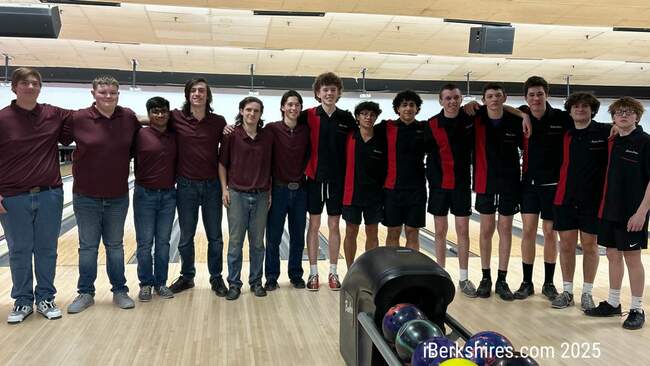President Speaks at Hudson Community College
 |
| White House file photo |
The president spoke of how higher education can be not only a personal impetus to success but is critical to the continued progress of the nation.
"The ability of new industries to thrive depends on workers with the knowledge and know-how to contribute in those fields," he said. "Yet, today, our primary and secondary schools continue to trail many of our competitors, especially in key areas like math and science."
Too many students are falling through the cracks because of their inability to afford higher education, he said in his address. "It's not only heartbreaking for those students; it's a loss for our economy and our country."
Hudson Valley received a $2 million federal grant this summer to expand its green jobs and energy efficiency training program. It also is opening a facility called TEC-SMART that will feature more than a dozen classrooms and laboratories used to train the workforce in green technologies, including semiconductor manufacturing, alternative fuels, and installation and maintenance of photovoltaic, geothermal and wind energy systems in Malta, adjacent to the GlobalFoundries semiconductor manufacturing plant.
The $4 billion plant, which broke ground a month ago, has been reaching out to area colleges, including Berkshire Community College in Pittsfield, Mass., to create a system for educating the thousands of workers it will need in the coming years.
The president toured technology classrooms at the college with Jill Biden, wife of Vice President Joe Biden, and spoke to a limited, invitation-only audience of students, faculty, area technology workers and community leaders. Jill Biden is a longtime English and writing with a doctorate in education. She has taught in high schools and community colleges and is currently an adjunct professor at Northern Virginia Community College.
President Obama left immediately after his speech for Air Force One, which had landed at Albany International Airport. He was to fly to New York City, where he will appear Monday night on "Late Night with David Letterman."
The president's full address is below:
Thank you, Jill. Dr. Jill Biden has been a teacher for almost three decades and she's spent most of that time in community colleges. She understands, as you do, the power of these institutions to prepare students for 21st century jobs, and to prepare America for a 21st-century global economy. That's what's happening right here at Hudson Valley Community College. This is a place where anyone with the desire to take their career to a new level or start a new career altogether has the opportunity to pursue that dream. This is a place where people of all ages and backgrounds — even in the face of obstacles, even in the face of very difficult personal challenges — can take a chance on a brighter future for themselves and their families.
I know that here in Troy, you want and need that chance after so many years of hard times. Communities like this one were once the heart of America's manufacturing strength. But over the last few decades, you've borne the brunt of a changing economy which has seen many manufacturing plants close in the face of global competition. So while all of America has been gripped by the current economic crisis, folks in Troy and upstate New York have been dealing with what amounts to a permanent recession for years: an economic downturn that has driven more and more young people from their hometowns.
I also know that while many have come here promising better news, that news has been hard to come by, despite the determined efforts of the leaders who are here today and many who are not. Part of the reason is that while the people of this city work hard to meet their responsibilities, some in Washington haven’t always lived up to theirs. For too long, as old divisions and special interests reigned, Washington has shown neither the inclination nor the ability to tackle our toughest challenges. Meanwhile, businesses were saddled with ever-rising health care costs and the economy was weakened by an ever-growing dependence on foreign oil; our investments in cutting-edge research declined and our schools fell short; growth focused on short-term gains and fueled by debt and reckless risk led to cycles of precipitous booms and painful busts.
Now, after so many years of failing to act, there are those who suggest that nothing government can do will make a difference; that what we've seen in places like Troy is inevitable; that somehow, the parts of our country that helped us lead in the last century don’t have what it takes to help us lead in this one. I am here today to tell you that this is just flat out wrong. What we have here is a community filled with talented people, entrepreneurial small businesses, and world-class learning institutions. The ingredients are here for growth and success and a better future.
You are proving that in the Hudson Valley. Students here are training full time while working part time at GE Energy in Schenectady, becoming a new generation of American leaders in a new generation of American manufacturing. IBM has partnered with the University at Albany; their partnership in nanotechnology is helping students train in the industries in which America has the potential to lead. Rensselaer is partnering not only with this institution but with businesses throughout the Tech Valley. And early next year, Hudson Valley Community College's state-of-the-art TEC-SMART training facility is set to open side-by-side with Global Foundry's coming state-of-the-art semiconductor plant.
So we know that Upstate New York can succeed. And we know that in a global economy – where there is no room for error and there is certainly no room for wasted potential – America needs you to succeed. As we emerge from this economic crisis, our great challenge will be to ensure that we do not simply drift into the future, accepting less for our children and less for America. Instead, we must choose to do what past generations have done: shape a brighter future through hard work and innovation. That's how we'll not only recover, but rebuild stronger than before: strong enough to compete in the global economy; strong enough to avoid the cycles of boom and bust that have wreaked so much havoc; strong enough to create and support the jobs of the future in the industries of the future.
Today, my administration is releasing our strategy to foster new jobs, new businesses, and new industries by laying the groundwork and the ground rules to best tap our innovative potential. This work began with the recovery plan, which devoted well over $100 billion to innovation, from high-tech classrooms to health information technology, from more energy-efficient homes to more fuel-efficient cars, from building a smart electricity grid to laying down high-speed rail lines. But it does not end there. For this strategy is about far more than recovery; it is about sustained growth and widely-shared prosperity. And it is rooted in a simple idea, that if government does its modest part, there is no stopping the most powerful and generative economic force the world has ever known: the American people.
Our strategy begins where innovation so often does: in the classroom and in the laboratory — and in the networks that connect them to the broader economy. These are the building blocks of innovation: education, infrastructure, and research.
We know that the nation that out-educates us today will out-compete us tomorrow. The ability of new industries to thrive depends on workers with the knowledge and know-how to contribute in those fields. Yet, today, our primary and secondary schools continue to trail many of our competitors, especially in key areas like math and science. Hundreds of thousands of high school graduates who are prepared for college do not go to four-year or two-year schools because of the high cost of doing so. And roughly 40 percent of students who start college don’t complete college. All along that education pipeline, too many slip through the cracks. It's not only heartbreaking for those students; it's a loss for our economy and our country.
Now, I know that for a long time politicians have spoken of training as a silver bullet and college as a cure-all. It's not — and we know that. But we also know that in the coming years, jobs requiring at least an associate's degree are projected to grow twice as fast as jobs requiring no college experience. We will not fill those jobs — or keep those jobs on our shores — without graduating more students, including millions more students from community colleges. That's why I've asked Dr. Biden to travel the country promoting the opportunities that these schools offer. That's why I'm grateful that Senator Chuck Schumer has shown tremendous leadership on this issue.
And that is why I've set this ambitious goal: by 2020, America will once again have the highest proportion of college graduates in the world. And to reach this goal, we've increased Pell Grants and created a simplified $2,500 tax credit for college tuition. We've made student aid applications less complicated and ensured that that aid is not based on the income of a job you've lost. We've passed a new GI Bill of Rights to help soldiers coming home from Iraq and Afghanistan begin a new life in a new economy. And the recovery plan has helped close state budget shortfalls — which put enormous pressure on public universities and community colleges — while also making historic investments in elementary and secondary schools. Finally, through the American Graduation Initiative I've proposed, we will reform and strengthen community colleges to help an additional five million Americans earn degrees and certificates in the next decade. Because a new generation of innovations depends on a new generation of innovators.
And just last week, the House of Representatives passed a bill that will go a long way to reform the student loan system so that college is more affordable for more people. Right now, the federal government provides a subsidy to banks to get them to lend students money. The thing is, the federal government guarantees the loan in case the student doesn't repay. So we subsidize the banks to take on the risk of these loans even though taxpayers just absorb the price of that risk anyway. This costs us more than $80 billion. If we simply cut out the middle-man, and lent directly, the federal government would save that money, and we could use it for what it is actually meant for: helping students afford and succeed in college.
That's what the bill I proposed does. It takes the $80 billion dollars the banks currently get, and uses it to make Pell Grants larger. It uses those funds to focus on innovative efforts to help students not only go to college but to graduate. And, just as important, these savings will allow us to make the largest investment ever in the most underappreciated asset of our education system: community colleges like Hudson Valley, which are so essential to the future of young people and our economy. And we hope to improve on this bill in the Senate to go even further on behalf of students.
Ending this unwarranted subsidy for the big banks is a no-brainer for folks everywhere. Everywhere except Washington, that is. In fact, we're already seeing the special interests rallying to save this giveaway. The large banks — many who have benefited from taxpayer bailouts during the financial crisis — are lobbying to keep this easy money flowing. This is exactly the kind of special interest effort that has succeeded before and that we cannot allow to succeed again. This is exactly the kind of waste that leaves people wary of government and leaves our country saddled with a trillion dollar deficit with little to show for it. This is exactly what I came to Washington to change. And I look forward to winning this fight in the Senate, as we just have in the House, and signing this bill into law.
One key to strengthening education, entrepreneurship, and innovation in communities like Troy is to harness the full power of the internet. That means faster and more widely available broadband, as well as rules to ensure that we preserve the fairness and openness that led to the flourishing of the internet in the first place. Today, FCC Chairman Julius Genachowski is announcing a set of principles to preserve an open Internet in which all Americans can participate and benefit. I am pleased that he is taking this step. It is an important reminder that the role of government is to provide investment that spurs innovation and common-sense ground rules to ensure that there is a level playing field for all comers who seek to contribute their innovations.
And we have to think about the networks we need today, but also the networks we'll want tomorrow. That's why I've proposed grants through the National Science Foundation and through the Defense Advanced Research Projects Agency — which helped develop the Internet — to explore the next communications breakthroughs, whatever they may be. And that's why I've appointed the first-ever chief technology officer, charged with looking at ways technology can spur innovations that help government do a better and more efficient job.
We must also strengthen our commitment to research, including basic research, which has been badly neglected for decades. The fact is, basic research may not pay off immediately. It may not pay off for years. And when it does, the rewards are often broadly shared, enjoyed by those who bore its costs but also by those who did not. That’s why the private sector generally under-invests in basic science, and why the public sector must invest in its stead. While the risks may be large, so are the rewards for our economy and our society. It was basic research in the photoelectric effect that would one day lead to solar panels. It was basic research in physics that would eventually produce the CAT scan. The calculations of today’s GPS satellites are based on the equations Einstein put to paper more than a century ago.
When we fail to invest in research, we fail to invest in the future. Yet, since the peak of the Space Race in the 1960s, our national commitment to research and development has steadily fallen as a share of our national income. That is why I have set a goal of putting a full three percent of our Gross Domestic Product — our national income — into research and development, surpassing the commitment we made when President Kennedy challenged this nation to send a man to the moon. Toward this goal, the Recovery Act has helped achieve the largest increase in basic research in history. And this month the National Institutes of Health will award more than a billion dollars in research grants through the Recovery Act focused on what we can learn from the mapping of the human genome in order to treat diseases that affect millions of Americans, from cancer to heart disease. I also want to urge Congress to fully fund the Defense Advanced Research Projects Agency, DARPA, which has since its creation been a source of cutting-edge breakthroughs from that early internet to stealth technology.
As we invest in the building blocks of innovation, from the classroom to the laboratory, it is also essential that we have competitive and vibrant markets that promote innovation as well. Education and research help foster new ideas, but it takes fair and free markets to turn those ideas into industries.
My budget finally makes the research and experimentation tax credit permanent. This is a tax credit that helps companies afford the often high costs of developing new ideas, new technologies, and new products — which often mean new jobs. And this tax incentive returns two dollars to the economy for every one dollar we spend. Time and again, I've heard from leaders — from Silicon Valley to the Tech Valley — about how important this is. I’ve also proposed reducing to zero the capital gains tax for investments in small or startup businesses. Because small businesses are innovative businesses, producing thirteen times more patents per employee than large companies.
Now, these tax incentives will spur entrepreneurship. But there are other important steps to foster markets that value and promote the risk takers and idea makers who have always been at the center of our success. That is why it is essential that we enforce trade laws and work with our trading partners to open up markets abroad; that we reform and strengthen our intellectual property system; that we sustain our advantage as a place that draws and welcomes the brightest minds from all around the world; and that we unlock sources of credit and capital which have been in short supply as a result of the financial crisis.
There are other fundamental barriers to innovation and economic growth that we must tackle in order to ensure American leadership and prosperity in the 21st century. For as a nation we face enormous challenges, from ending our dependence on oil to finally providing all Americans with quality, affordable health care. We need to focus on innovations that will help us meet these challenges — innovations that will benefit society while creating new jobs in new industries.
Health care costs, for example, leave our small businesses at a disadvantage when competing with our large businesses, and leave our large businesses at a disadvantage when competing around the world. And we will never know the enormity of the cost to our economy of the countless Americans unable to become an entrepreneur, to start a small business, to follow their dreams — because they're afraid of losing their health insurance. To lead in the global economy, we must pass health insurance reform that brings down costs, provides more security for people who have insurance, and offers affordable options for those who don't.
And the recovery plan that we passed earlier this year has begun to modernize our health care system, by taking the long-overdue step of computerizing America's health records. This will reduce the waste and errors that cost billions of dollars and thousands of lives — while protecting patients' privacy. It's important to note, too, these records hold the potential of offering patients the chance to be more active participants in the prevention and treatment of illness. And health information technology, if implemented effectively, has the potential to unlock so many unanticipated benefits, as the patterns in data we do not yet collect reveal discoveries we cannot predict.
But in no area will innovation be more important than in the development of new ways to produce, use, and save energy. I firmly believe that the nation that leads the clean energy economy will be the nation that leads the global economy. That is why we're doubling our capacity to generate renewable energy and building a stronger and smarter electric grid. We're investing in technologies to power a new generation of clean-energy vehicles. We've helped reach an agreement to raise fuel economy standards. And for the first time in history, we’ve passed a bill to create a system of clean energy incentives which will help make renewable energy the profitable kind of energy in America — while helping to end our dependence on oil and protect our planet for future generations. The bill has passed the House and now we're working to pass legislation through the Senate.
That is an overview of our strategy. It is a strategy that is essential for our recovery today and our prosperity tomorrow. And it is a strategy rooted in a deep and abiding faith in the ability of this country to rise to any challenge. That is our history. We are a people with a seemingly limitless supply of ingenuity and daring and talent. And at its best, our government has harnessed those qualities without getting in the way. That is what led to the building of the Erie Canal which helped put cities like Troy on the map, that linked east and west and allowed commerce and competition to flow freely between. That is what led an inventor and shrewd businessman named Thomas Edison to come to Schenectady and open what is today a thriving mom-and-pop operation known as General Electric.
A former Senator from New York, Robert Kennedy, once told us, "The future is not a gift. It is an achievement." It was not an accident that America led the 20th century. It was the result of hard work and discipline and sacrifice, and ambition that served a common purpose. So it must be in the 21st century. Future success is no guarantee. As Americans we must always remember that our leadership is not an inheritance, it is a responsibility.
From biotechnology to nanotechnology, from the development of new forms of energy to research into treatments of ancient diseases, there is so much potential to change our world and improve our lives — while creating countless jobs all across America. The question is if we are ready to embrace that potential, if we are ready to lead the way once more. And I know that we are ready. I've seen it all across America. This generation has an unparalleled opportunity that we are called upon to seize. That is what you are doing at Hudson Valley Community College. And that is what we will do as a nation.
Thank you.















